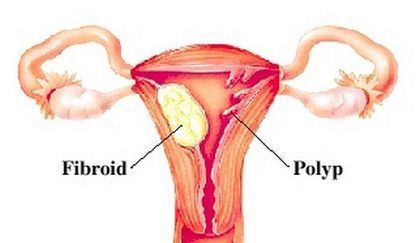Polyp of Uterus
Uterine polyps are growths attached to the inner wall of the uterus that extend into the uterine cavity. Overgrowth of cells in the lining of the uterus (endometrium) leads to the formation of uterine polyps, also known as endometrial polyps. These polyps are usually noncancerous (benign), although some can be cancerous or can eventually turn into cancer (precancerous polyps). Uterine polyps range in size from a few millimeters — no larger than a sesame seed — to several centimeters — golf-ball-size or larger. They attach to the uterine wall by a large base or a thin stalk. You can have one or many uterine polyps. They usually stay contained within your uterus, but occasionally, they slip down through the opening of the uterus (cervix) into your vagina.

Gynaecology Services
- Endometrial (uterine)
- Cervical
- Gastric (stomach)
- Nasal
- Colorectal (colon)
Experts don’t know exactly why women get uterine polyps. It may be linked to changes in hormone levels. Each month, your estrogen levels rise and fall, causing the lining of your uterus to thicken and then shed during your period. Polyps form when too much of that lining grows.
Some things might make you more likely to have polyps. One is age; they’re more common in your 40s or 50s. That may be due to the changes in estrogen levels that happen just before and during menopause.
You might also be at higher risk because of:
- Obesity
- High blood pressure
- The breast cancer drug tamoxifen
- Irregular menstrual bleeding
- Bleeding between menstrual periods
- Excessively heavy menstrual periods
- Vaginal bleeding after menopause
- Infertility
